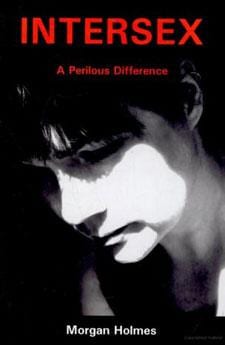Dominant culture continues to insist on two clearly demarcated sexes, as demonstrated by the oft-repeated exclamation of gendered and sexed identity at birth — either “It’s a boy!” or “It’s a girl!” But the indeterminacy of sexual anatomy is more common than many realize, with about one in every 100 births exhibiting “ambiguous genitals.”
Yet these differences are made to disappear when the medical establishment and anxious parents opt for biomedical intervention as a response to what Wilfred Laurier sociologist Morgan Holmes terms a “psychosocial emergency” in her Intersex: A Perilous Difference.
Social and political battles over the cultural meanings of difference in gender are being fought in the realms of law, medicine, psychiatry and beyond. Witness the recent case of Caster Semenya, the South African runner whose gender nonconformity highlights the intense gender regulation in professional sport. The 18-year-old’s deep voice, muscular build and amazing race times prompted speculation that she wasn’t “entirely female.” The International Amateur Athletics Federation demanded she undergo a “gender verification test” during the World Championships in Athletics in August, where she won gold in the 800-metre race.
The handling of this case is not only egregious because it’s turned into a media spectacle but because, in most commentary on the subject, the very fact that gender remains the most significant division in professional sport is never questioned, and its significance is entirely taken for granted as basic “biological” differences.
Like transsexuality, intersexuality elicits some intense reactions because it complicates the notion that there are simply two “opposite” genders, the foundation upon which a heterosexual regime is supported. In Intersex, Holmes (also editor of the subsequently published collection Critical Intersex) shows how intersexuality is seen as threatening or even unintelligible within that dichotomy. She mines medical, social, historical and literary texts that have sought to make intersexuals (once known as “hermaphrodites,” a term resurrected by the benighted media coverage of Semenya) as an exemplar of the exotic other, and a biomedical anomaly in which scientists bent their clinical gaze.
Holmes charts the way medicine, starting in the 19th century, studied physical difference as a way of shoring up a regime of “normal” people and normative human functions carved out from a universe of difference. She discusses the history of intersex persons in the medical field when a regime of medical knowledge in the 19th century marked many — including prostitutes, homosexuals and those labelled hermaphrodites — as “others” who were indisputably different from the normal person, attempting to locate this difference in the physical body. She analyzes the current situation on the “expert” management of intersexuality as a more sophisticated version of 19th-century medicine, updated with technology that can measure ever-smaller distinctions within the body and its chemical makeup. She provides an account of why intersex bodies are a site of the most visible forms of intervention, a preemptive biomedical enforcement of a rigid binary sex.
Her literary readings of novels and films uncover how the body of the “herm” is taken as an unruly body and as a cipher for sociocultural codes of degeneration, decay or romantic notions of transgression. These readings of pop culture serve to outline how the imperatives for medical, scientific and so-called expert practices are not separate from the prevailing norms and attitudes that make up the culture at large. Holmes singles out Pulitzer Prize-winning novelist Jeffrey Eugenides’ novel Middlesex and episodes of The X-Files for constructing intersex characters whose lives essentially reproduce the social fascination with the monstrous and the deviant. For Holmes, who has received numerous calls from would-be writers who wish to “fact check” their stories against the “real lives” of intersexual folks, the kinds of concerns these stories address often have little to do with the complexity of lived experience whose lives are painfully mediated by the norms of scientific and medical authority.
Holmes’ diagnosis of the current dilemma faced by intersexuals highlights the need for more public education, awareness and sensitivity within medical schools, hospitals and clinics, and among the general public. Since it’s often parents who are faced with the choice of whether to have their baby’s genitals altered, Holmes advocates delaying such procedures outside of the few truly dire medical conditions so the choice of sex/gender can be made by those individuals when they’re ready. Holmes’ work provides the necessary histories and counter-narratives of those whose bodies have undergone such invasive procedures in order to make visible the untold stories of harm and mental anguish.
Organizations like the Intersex Society of North America (Isna.org) and the Gay and Lesbian Medical Association (Glma.org) are working to change medical practices to provide greater autonomy for intersexuals faced with a difficult negotiation of their bodies and the stringent codes of the culture. In a braver new world where we can count more than two genders, the permutations of sex, gender and erotic practices multiply, challenging long-held and tenaciously enforced social divisions.
A rising intersex movement drains power away from a cultural hegemony that functions by promoting a hierarchy of values on different bodies. Intersex politics portend the utopia of multiple bodies where diverse meanings and truly creative solidarities among difference can be celebrated, enabling unique and unforeseen pathways of desire. Holmes’ work is an important part of the ground clearing that needs to happen first, where a trajectory of intersex politics can be discerned as a possible route toward the end of the ideology of binary gender.

 Why you can trust Xtra
Why you can trust Xtra


